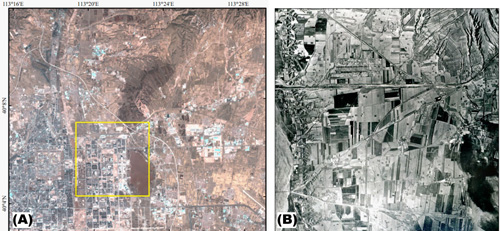21 April 2021–Decades-old aerial photos of Yudong District, Datong City in Shanxi Province, Northern China have helped researchers in their search for a fault hidden underneath the city’s buildings and cement roads, researchers said at the Seismological Society of America (SSA)’s 2021 Annual Meeting.
Analyzing these photos from the 1960s and 1970s allowed Junjie Ren and colleagues to reconstruct a digital elevation model along the Shuiyu fault, helping them identify the fault trace as it passes through Datong City.
Trenching along the revealed fault trace found evidence of five previously unknown earthquakes along the fault, ranging in age from 9930 years ago to 23,550 years ago, said Ren, a researcher at the National Institute of Natural Hazards, Ministry of Emergency Management of China.
“Our work is the first to determine the fault trace in the city area and find evidence of the past five surface-rupturing earthquakes in the latest Quaternary,” he said.
“Given the elapsed time of about 10,000 years, the Shuiyu fault beneath the Yudong District will increase the risk of a large earthquake in the future,” Ren added.

Previous mapping showed that the Shuiyu fault crossed the city, which is at the center of a basin bounded by several Holocene-age normal faults. But studies suggested the fault had not been active since 20,000 years ago, and landforms such as fault scarps that might have marked its extent had disappeared under rapid urbanization beginning in 2000.
“Generally, shallow seismic reflection imaging and drilling are used to explore the location of a potentially active fault beneath a city,” Ren explained. “But these techniques are costly and time-consuming.”
Aerial photos of the city from the 1960s and 1970s, however, revealed a much less densely populated and built area. Ren and his colleagues applied a technique called stereophotogrammetry to the images, using measurements from the photos to calculate the 3D coordinates of features on the landscape.
In this way, the scientists were able to recreate a digital elevation model of part of Datong City as it was before urbanization, making features like fault scarps visible again.
Ren recommends the technique for uncovering similar “invisible” potentially active faults in other densely populated and built urban areas. “A big earthquake beneath a big city will bring a massive loss to the economy and significant casualties,” he said.
